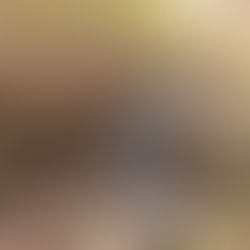Hiking to See Ancient Boobs: The Quest for the Moab Maiden
- Dan Wagner

- Apr 13
- 3 min read
Updated: Jun 19
The Moab Maiden is a fascinating petroglyph etched into a solitary sandstone boulder perched above Kane Springs Creek just outside of downtown Moab, Utah. The unique figure, believed to represent a female form, is distinguished by its depiction of breasts and long hair—features that are rare in regional rock art. Some researchers suggest a stylistic connection between the Moab Maiden and the nearby Birthing Scene petroglyphs, hinting at possible shared cultural or artistic origins. The short, fun day hike is good for all ages and is a must do for rock art enthusiasts.


Trailhead elevation 3,978'
Water none
Don't miss the nearby granary and petroglyph panel
Hiking to Moab Maiden
After several days of hiking and backpacking through Grand Staircase-Escalante National Monument, I arrive in Moab with a few hours to spare before meeting up with Dave and Brent. I’ve had Moab Maiden on my radar for years, and with time to kill, I decide it’s finally time to check it out in person.
The quickest way to reach the site is via the Jackson Trail, part of the Amasa Back hike and bike network. The Jackson Trail can be found off of Kane Springs Road in the Kane Creek OHV Trailhead parking area.

I set off along the trail, which descends toward Kane Creek, where a small wooden footbridge crosses the stream. I’ve been here before and know that the creek is often too high, making the bridge inaccessible. Fortunately, the water is low this time, and I’m able to cross without issue.

About 0.06 miles past the bridge, I take a well-worn trail to the left, which climbs steeply uphill. I follow this path along the rim, my vehicle visible the whole time at the Kane Creek OHV Trailhead just to my right.

Soon, I reach a slickrock drainage and veer left.

Roughly a hundred feet later, at the end of the slickrock, I pick up another established footpath leading toward the canyon wall. After a brief ascent up a steep slope, I reach the petroglyph panel—resting on a large boulder near the top of the wall, facing away from the Colorado River.

Only 0.6 miles from the trailhead and still with time to spare, I decide to explore another nearby site: a second petroglyph panel and a granary. I descend from the panel and, on the way down, notice two visible trails leading across the canyon. I choose the leftmost one. After following the trail a few hundred feet uphill, I spot the granary well in advance.

I hike up for a closer look and find it remarkably intact, with a few potsherds still tucked inside—an unexpected bonus.

From there, I descend again and follow another clearly marked trail toward the Colorado. It ends at the base of a cliff, where I find the second petroglyph panel.

The panel features several depictions, including various zoomorphic figures and a human-like image that closely resembles the Moab Man found at the nearby Golf Course Rock Art Site.

Satisfied with the detour, I retrace my steps to the trailhead. As I arrive, I chat with a couple about to begin their own search for the topless maiden. Their GPX file won’t load, so I give them simple directions instead. Later, as I nap in my truck, they knock on my window to thank me—they found it easily. No GPX required—just take the first left after the bridge and follow the obvious trails. It’s that simple.
There are plenty of incredible hikes and roadside stops nearby, including the Owl Panel and Birthing Scene. But my favorite, without a doubt, is Solstice Snake. Save that one for the summer solstice and you'll be floored.
_edited.png)







































Comments